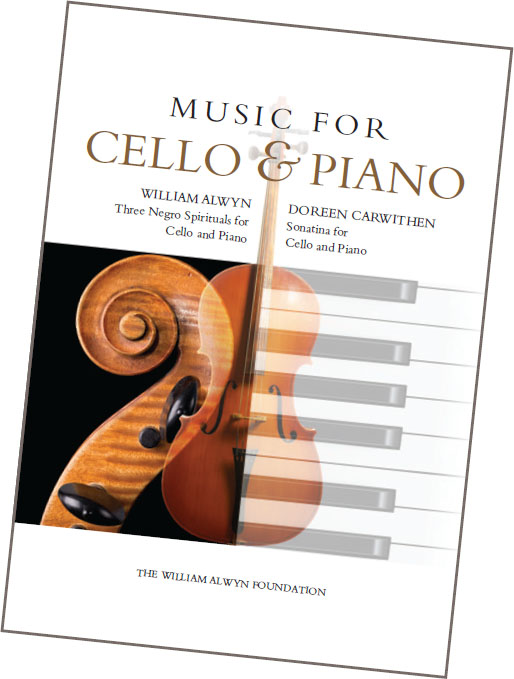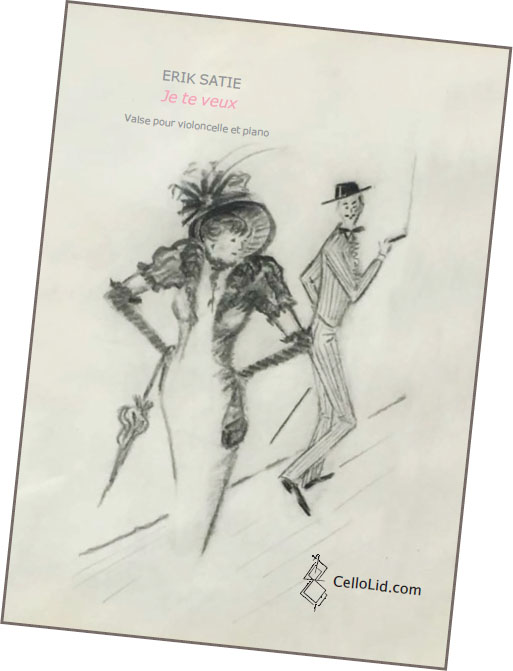
Fun with Cello Harmonics
This is a timeless classic which is a great asset to cello teachers and students alike. It gives a clear introduction to the different harmonics on the cello for students learning about these for the first time. The work is presented in a fun and friendly way for teachers and students, even providing dot stickers for students finding their harmonics in the early stages.
The facts and the necessary bits of the science of harmonics are presented after the initial explanation at the beginning of the book, challenging the student to engage with statements like ‘if you are good at maths…’ and then encouraging them to make a map on their cello.
Students can initially find some of the key harmonics by playing ‘Magic fanfares’, and a discussion about notation of harmonics ensues, explaining how it works.
An imaginative series of 11 concert pieces is then presented, each starting with learning a song and then giving options of two different accompaniment parts, one with harmonics and the other a bass line. This means that the teacher and student could sing and each play a part in an individual lesson situation. Or there is flexibility to use these in an ensemble setting by splitting players into teams. More elementary students could also be involved simply in singing the song and then having the chance to observe the various techniques in action. There are additional clapping parts for some of the pieces, which could also engage others in an ensemble setting, or could just be used to develop rhythm reading skills and pulse.
The attractive concert pieces include ‘Twinkle Jazz’, ‘Hot Cross Buns Jazz’ and ‘Mary had a Little Lamb’ but with a bass line loosely based upon the first Bach prelude. The bass lines are creative and imaginative, lending a fun but firm foundation to the pieces.
In the later part of the book, the high harmonics at the bridge end of the string are explored, allowing the student to learn the sound of their part in first position, and then transposing it up onto the high harmonics.
Working through this book would definitely give any student confidence in exploring and using their harmonics across the range of the instrument and would take away the fear factor that some students have felt about playing in the higher reaches of the cello over the years. This book would undoubtedly be a great addition to any cello teacher's library!

Music for Cello & Piano
Here we are presented with a slightly unusual pairing of works, bringing together the publications of husband and wife composers side by side. Both works are quite different in nature, and indeed Doreen Carithwen's sonatina could easily stand alone in its own right.
Alwyn's spirituals are simple, recreational pieces. Few performances are known to have taken place to date, although the third piece, ‘I'm Trav’ling to the Grave’ has been known to have a couple of standalone performances, including one by Julian Lloyd Webber.
These short songs could be used as concert pieces or with students. They are easily accessible in cellistic terms, and the third of the group is probably best suited to the strengths of the instrument with sonorous singing lines in lower and higher ranges of the instrument. The latter might also be useful to teachers at the point of initially introducing reading of treble clef to students as the melody initially played in bass clef is then repeated an octave higher, notated in treble clef.
Doreen Carithwen lived in an era when it was challenging for female composers to gain publishing contracts or to have their works performed, although she held various well-respected academic posts. This work might now be of interest to cellists who are increasingly keen to explore the work of female composers and to bring works previously lost in this way to the fore.
This sonatina is a very colourful and appealing piece offering both instant appeal and musical depth with a range of rich harmonies and rhythmic interest. The first movement, ‘Andante’, has a piano part offering a wealth of harmonic interest and colours, reminiscent of composers such as Frank Bridge. The cello explores well-shaped lyrical lines across the range of the instrument. The lively second movement, ‘Allegro’, has great rhythmic drive and energy with good interaction between parts. The contrasting cantabile sections allow the cellist to sing, accompanied by colourful running semiquavers in the piano. The third movement, ‘Andante con moto’, is reminiscent of English folk music influences in a lilting 6/8 time. The simple lyrical cello line explores with rhythmic interest underpinned by a mostly chordal accompaniment giving a colourful foundation in the piano.
This is a most enjoyable piece to play and could be enjoyed by cellists working at a range of levels, from advanced students to professionals. This is a piece which would be interesting to hear performed more in concert situations in future.

Je te veux
Mats Lidström presents a version of Erik Satie's well-known song, ‘Je te veux’ for cello and piano. This is a charming arrangement which would be suitable both for use as a concert piece by professionals or good amateurs, and also as a piece for developing students around Grade 7 to 8 level and beyond to explore.
The cello delivers the singing melody accompanied by a typical Parisian waltz style of piano accompaniment. Lidström specifies that he has chosen to write indications for variations of dynamic and change specifically on the page, compensating for the fact that a singer would naturally make variations between verses based upon the words.
The book is presented with well thought out bowings and interesting fingering suggestions, which offers up a range of sound colours on the different renditions of the verses. Musical markings such as tenutos and retenus are marked, giving specific expressive detail.
The edition is well presented, with a nice introductory paragraph about Lidström's personal moments of inspiration and involvement in earlier life with the song, including his excitement at the audience reactions when he was turning pages at the age of 16 for this song during a recital in which singer Elly Ameling was accompanied by Dalton Baldwin. The words by Henry Pacory are also presented in both French and English, allowing performers to connect with the song's original element.
Lidström notes that Satie's original piano version is fairly long if the purpose is to use it as a concert piece, so he makes a good suggestion of a substantial cut which can be implemented if this is the purpose of a performance. The full version is offered, however, and this could be useful if being used in a background music situation for example, for which this piece would indeed be well suited.








